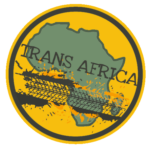Namibia: home of the oldest desert in the world
Namibia is a fascinating country located in the southern part of Africa, it owes its name to the Namib, the oldest desert in the world and is estimated to have existed for about 80 million years.
Namib properly means the land of open spaces, and the Namib Desert is home to some of the largest sand dunes in the world, these towering sand mountains are both amazing and a lot of fun to climb.
One of the most popular places to visit to admire some incredible giant dunes is Sossusvlei, located in the southern part of the Namib Desert, and from which it is possible to reach Dune 7 which with a height of 383 m is the highest sand dune in the country. .
Despite being an extreme place, the desert is home to life forms and this is possible thanks to the dense mists common along the coast which are the lifeblood of the desert, the mists provide enough moisture for a variety of interesting and well-adapted animal species to thrive. extreme conditions.
The coastal strip where the desert meets the ocean takes the name of Skeleton Coast, this macabre name was given to it due to the numerous whale skeletons that were found along the coast but later the skeletons of numerous shipwrecked ships were also added here to away from the treacherous currents of this stretch of the Atlantic Ocean.
The Republic of Namibia was the first country to include environmental protection in its constitution, so it is not surprising that the country is protected by numerous parks and reserves.
The focus on nature conservation translates into two outstanding records: Namibia is home to the world’s largest free-range black rhino population and the largest free-range cheetah population in the world.
Located in the Kunene region of Namibia, Twyfelfontein has one of the largest concentrations of rock carvings and art on the continent; it was the San, the Bushmen, who engraved these precious testimonies that date back up to 6,000 years ago.
Fish River Canyon is the largest canyon in Africa and is one of the many natural wonders of Namibia; the canyon has a total length of 160 km, a maximum width of 27 km and a maximum depth of almost 550 m.
It is the second largest canyon after the Grand Canyon and is worth a visit for its majestic size and breathtaking views.
Although Namibia has the second lowest population density in the world, after Mongolia, there are numerous ethnic groups in its territory, some of which live following ancient traditions such as the Himba, the red people of Namibia.
I just wish the world was twice as big and half was still unexplored
David Attenborough
In Namibia we will visit the following destinations:
- The Transfrontier Park of | Ai- | Ais / Richtersveld
- The largest canyon in Africa
- Southern Namibia: Luderitz and Kolmanskop
- The Namib Desert and the Namib Naukluft NP
- The Skeleton Coast, sea lions and wrecks
- Rock art at Twyfelfontein
- The Himba people
- Acquaintance with cheetahs
- Safari in the Etosha National Park
